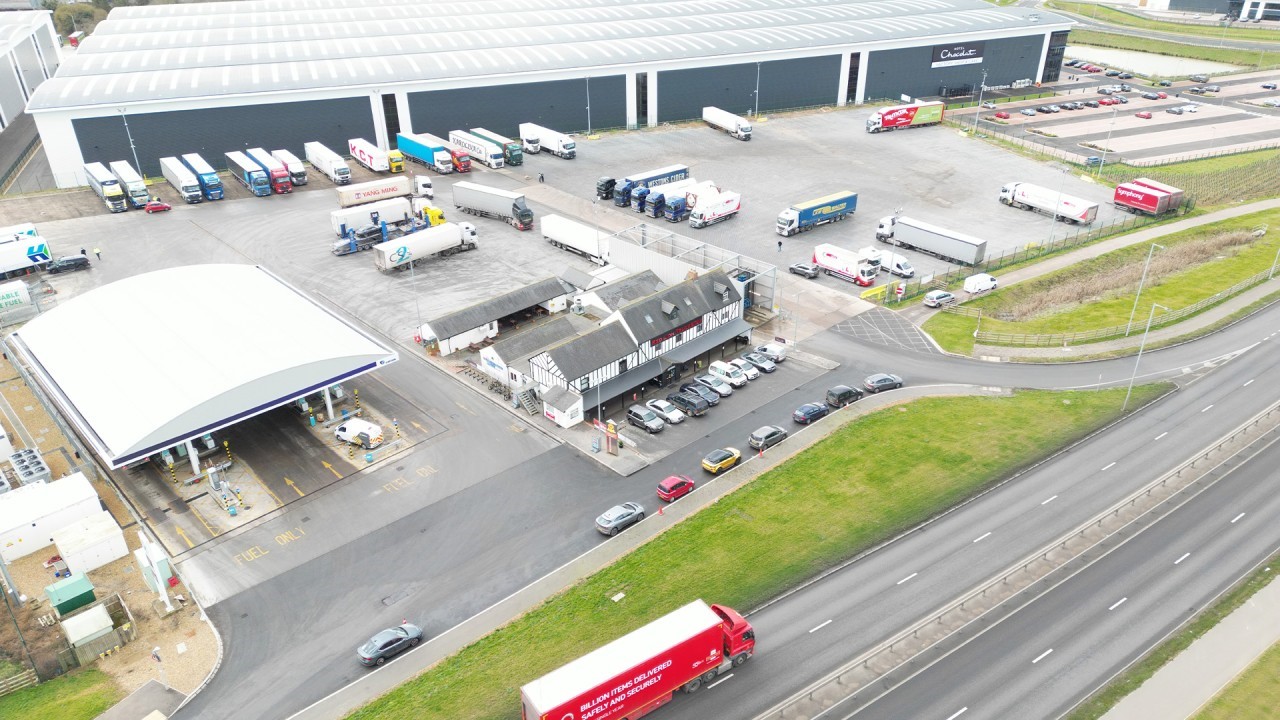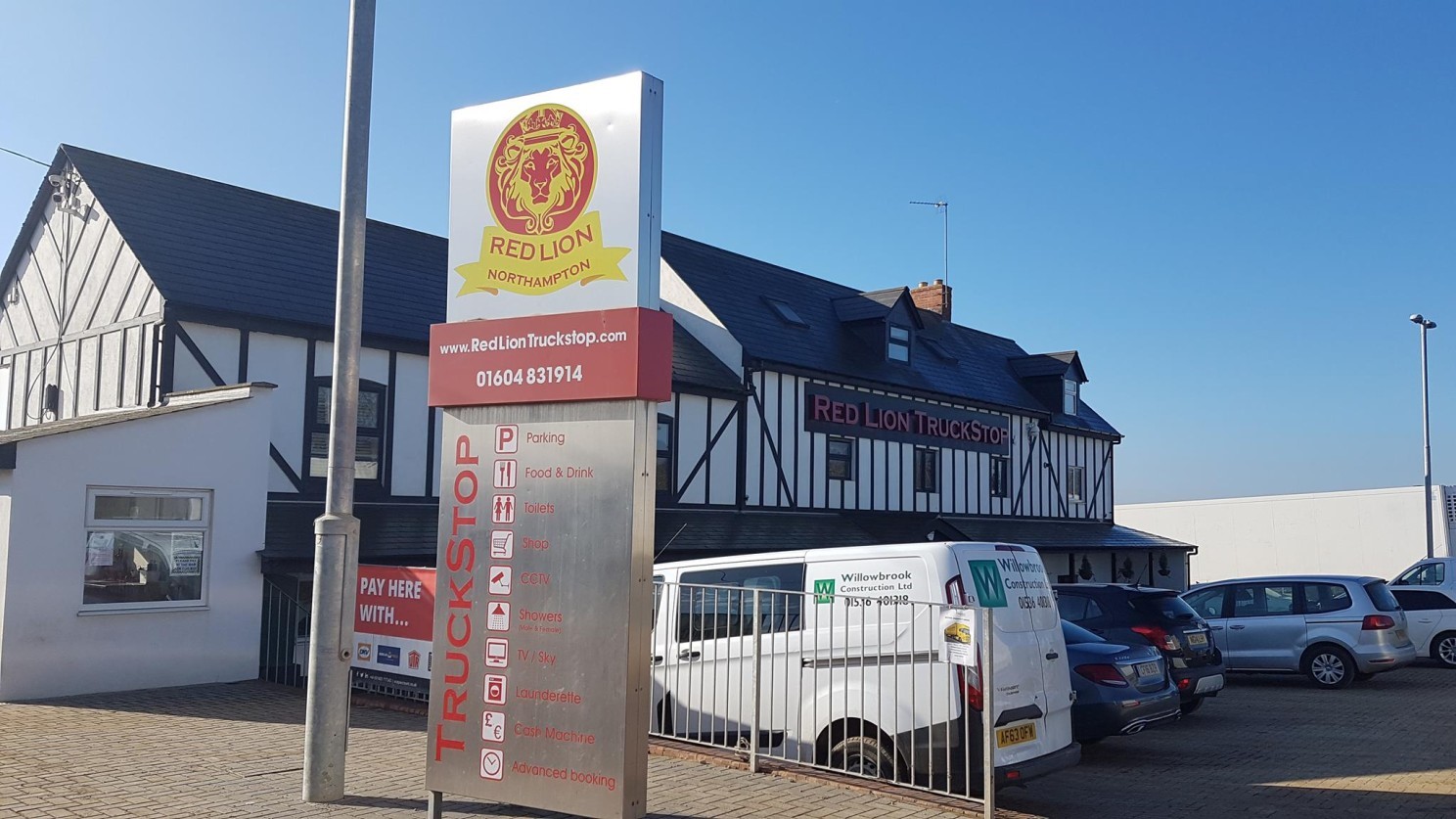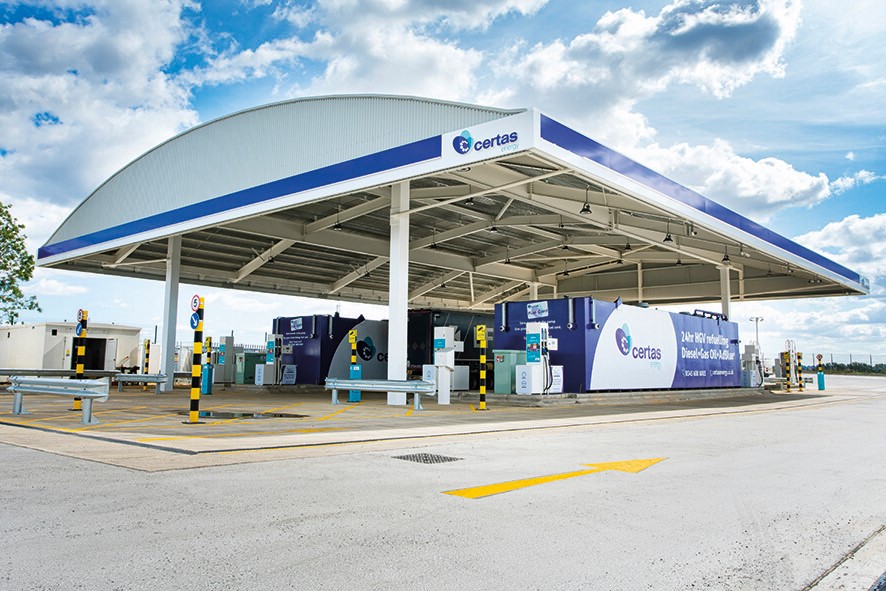
Susie Jones
L'autogrill Red Lion - Un modello di successo
Creato: 28/08/2024
•
Aggiornato: 28/08/2024
A soli 200 metri dalla M1, allo svincolo 16, si trova l'autogrill Red Lion. Fondato più di 30 anni fa, il Red Lion è diventato la meta preferita dagli autisti. Descritta come il paradiso dei camionisti, la sua atmosfera comunitaria, il cibo delizioso e la vasta gamma di servizi rendono questa premiata area di sosta una delle preferite. L'operatore del sito, Ali Sadrudin, ci parla del sito.
"Il sito può ospitare oltre 200 camion per notte. È presente una stazione di rifornimento ad alta velocità, che non solo eroga gasolio e AdBlue, ma anche gas naturale compresso (CNG). C'è anche un nuovo autolavaggio a 3 spazzole con personale. L'edificio di intrattenimento dispone di un ristorante e bar, un negozio di accessori per camion, una lavanderia a gettoni, un centro giochi, bancomat, docce e servizi igienici presidiati e spazi per funzioni e riunioni".

Strutture
Alcuni considerano le aree di sosta dei camion solo un luogo di riposo per gli autisti, ma esse svolgono un ruolo cruciale nel migliorare il benessere dei conducenti. Noi di SNAP sappiamo che fornire agli autisti strutture pulite è un imperativo. Ma di cos'altro hanno bisogno i camionisti?
"Credo che i clienti cerchino le cose essenziali, ma fatte bene. Buon cibo, strutture pulite e sicurezza per i loro veicoli e i loro carichi. Se riuscite a fornire tutto questo, avrete clienti felici e ripetitivi", afferma Ali.
Una rapida occhiata alla pagina Facebook del Red Lion indica che il mantra è certamente seguito, e funziona. Commenti come "un'area di sosta da urlo, la migliore del Paese" e "forse una delle migliori aree di sosta in Inghilterra" supportano le oltre 4.000 recensioni positive su Google.
Sicurezza e protezione
Tuttavia, pasti deliziosi e strutture pulite non sono le uniche cose su cui Ali e il suo team si concentrano. Prendono molto sul serio anche la sicurezza. Nel 2020 è stato stimato che nel Regno Unito sono stati commessi oltre 4.000 reati contro i mezzi pesanti, il trasporto merci e il cargo, con un costo di 250 milioni di sterline per il Regno Unito. Siti come il Red Lion hanno introdotto misure di sicurezza per ridurre questo numero.
Ali afferma che "SNAP ci ha aiutato a ottenere la certificazione TAPA PSR Livello 3". Nel febbraio 2023, il Red Lion ha ricevuto il Park Mark Freight Award. Ali ci parla delle misure di sicurezza adottate per ottenere questo riconoscimento.
"Il sito è un sito sicuro per progettazione. Abbiamo guardie presidiate 24 ore su 24, 7 giorni su 7, che pattugliano il sito, mentre una terza parte monitora le telecamere a circuito chiuso. Abbiamo una recinzione ininterrotta di 3 metri intorno al sito, con telecamere fisse che guardano in tutti i punti, in modo da poter rilevare eventuali ingressi non autorizzati o danni ai pannelli della recinzione. Il sito è inoltre completamente illuminato secondo i livelli di lux richiesti dalla polizia, con telecamere di rilevamento del movimento posizionate strategicamente intorno al sito per rilevare qualsiasi movimento non autorizzato e assicurarsi che ogni parte del sito sia sotto controllo. Un sistema ANPR per rilevare le targhe che entrano ed escono dal sito e un allarme di risposta rapida con la polizia in caso di necessità di chiamarla".
Il Red Lion ha inoltre adottato misure supplementari per garantire che le autiste si sentano a proprio agio e al sicuro durante le loro visite. Sono disponibili servizi come docce, bagni e spogliatoi per donne. Queste misure non sono passate inosservate, visto che nel gennaio 2023 l'autogrill è stato nominato uno dei migliori del Regno Unito per le autiste di mezzi pesanti.

Ricavi ed espansione
Uno dei molti vantaggi per i gestori di sedi che utilizzano SNAP è il miglioramento della redditività e dell'ottimizzazione. Ali, cliente fondatore di SNAP, spiega come SNAP abbia portato all'azienda ulteriori entrate da quando è entrato a farne parte nel 2009.
"È stato un processo graduale nel corso degli anni, ma dato che le abitudini di spesa degli automobilisti cambiano continuamente e diventano prive di contanti, posso immaginare che un nuovo sito che si occupi di SNAP abbia un ritorno immediato. Circa il 65% delle entrate totali del sito proviene da SNAP".
Dal 2009 le cose sono cambiate molto nel settore. Ali spiega come il sito si sia dovuto adattare ai cambiamenti del settore e all'aumento della domanda.
"Inizialmente il sito era in grado di ospitare solo 130 mezzi pesanti per notte, ma nel 2018 è stato ampliato a più di 200 per soddisfare l'aumento della domanda", afferma Ali. Per gli autisti e le flotte che utilizzano SNAP, quei 200 posti diventano facilmente prenotabili.
Dopo soli quattro anni, il sito ha visto un'ulteriore espansione con l'introduzione di un nuovo impianto di lavaggio per autocarri. Inaugurato nel novembre 2022, il modernissimo impianto di lavaggio a tre spazzole è adatto alla maggior parte dei veicoli commerciali leggeri.

Aderire a SNAP come partner di servizio
L'adesione a SNAP mette la vostra sede di fronte a 160.000 autisti e 7.000 flotte. Per gli autogrill, come il Red Lion, che si sforzano costantemente di offrire nuove iniziative e strutture ai propri clienti, SNAP offre l'opportunità di farlo.
"SNAP ha permesso al sito di offrire un metodo di pagamento alternativo che non può che giovare ai clienti e attirarli sul sito", afferma Ali.
I vantaggi di SNAP
Oltre 160.000 conducenti utilizzano il Conto SNAP. Per questo motivo, sono fondamentali standard elevati. Sebbene i partner di servizio che accettano pagamenti con Conto SNAP siano aziende indipendenti, esaminiamo ogni sito e ci assicuriamo che soddisfi i nostri standard. Inoltre, il nostro team di rete è disponibile in caso di necessità.
"SNAP ci ha sempre sostenuto fin dalla prima volta che ci siamo iscritti", dice Ali.
Alla domanda su quale sia l'aspetto migliore di SNAP, Ali afferma: "Il livello di servizio, hanno fatto di tutto per adattare il sistema di biglietteria alle nostre esigenze".
E il suo consiglio ai proprietari di aree di sosta che stanno pensando di aprire la loro sede agli autisti SNAP?
"Fatelo! Perché non vorreste portare altri clienti sul vostro sito?".
Iscriviti a SNAP
Per migliorare la vostra redditività e ottimizzare le operazioni del vostro sito, visitate snapacc.com.



